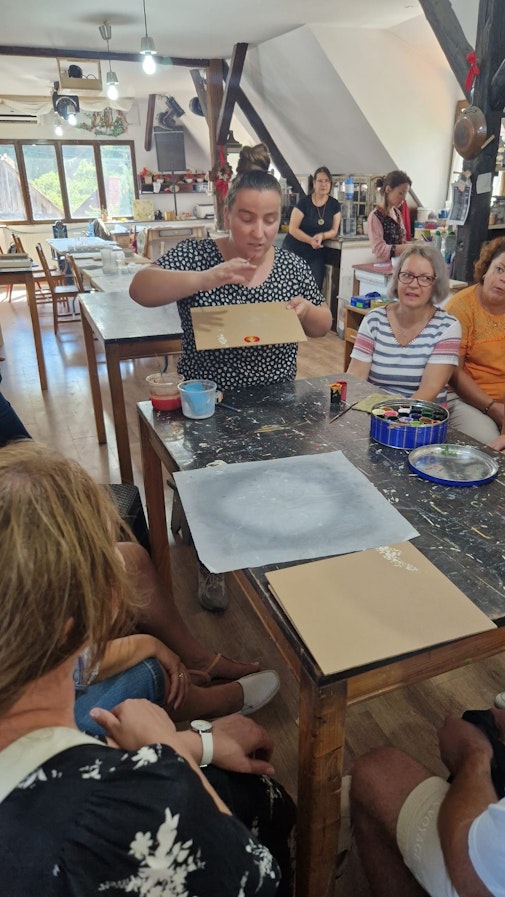Discover an ancient Transylvanian tradition

The technique of producing painted furniture is a manufacturing process, with origins in the field of craftsmanship dating back long before the period of Transylvanian Saxon guilds. Painted furniture represents both a material and an immaterial form of heritage, because at the basis of the physical production of the furniture pieces are a series of immaterial aspects such as: ideas, knowledge, skills, spiritual beliefs, life experiences and feelings—aspects that are part of the immaterial sphere of human activity.

However, the decline of this ancient tradition began towards the end of the 20th century with the mass exodus of the Saxons to the Federal Republic of Germany.
Since ancient times people have used the natural resources of the local environment as they were abundant and economically accessible. As Romania is a Carpathian country, forests occupied large areas, favouring the development of a wood culture and a tradition of wood processing.
The process of making painted furniture is a complex one which requires, in the first phase, the processing of wood using specific techniques and, in the second phase, wood painting techniques. The technique of shaping wood is not a new one. The most beautiful pieces of Saxon furniture, however, date from the 17th century. XVII-XIX, being attributed as composition to the peasant baroque style, as they abound in shapes and colors. The most important decorative motifs were embodied in signs or symbols of ancient beliefs, legends or myths of mankind. The sun symbols, the tree of life, the image of man and the image of the horse are the oldest graphic expressions (Petrescu). In the evolution of ornamental symbolism, circumscribed by popular creation, it benefited from the Byzantine influence and the European cultural currents expressed in the period of the late Middle Ages, the Renaissance, the Baroque and Rococo periods resulting in a number of famous motifs: the tree of life, the umbrella figure, the great Nordic goddess, the mermaid, the bird. These are added to the local themes: variants of the tree of life, sun signs, the serpent and the dragon, the horse, anthropomorphic images (Petrescu).




References
- M. Cionca, Stiluri si ornamente la mobilier – Renasterea italiană (Styles and ornaments for furniture – Italian Renaissance), University Transilvania, Brasov, 2004, 120.
- M. Cionca, Proiectarea mobilei stil – Cassoni din Renasterea florentină (Design of art furniture – Cassoni from Florence Renaissance), University Transilvania, Brasov, 2004, 205.
- Horșia, O; Petrescu, P. Artistic Crafts in Romania, 1971.
- Capesius, R. Pictura pe lemn la saşii transilvăneni, Editura Kriterion,
- Beșliu,O.; Frâncu, R. Din istoria breslelor sibiene, Alba Iulia, Editura Altip, 2007, p. 42.
- Butură,V. Străvechi mărturii de civilizație românească, București, Editura Științifică și Enciclopedică, 1989, p. 333
- Sedler, I. Pictured furniture from South Transylvania. An international project at the house of arts in Sibiu. (August–November 2007).
- Zelgy,T. Siebenbürgisch-sächsische Möbelmalerei, Editura Kriterion, 1980.